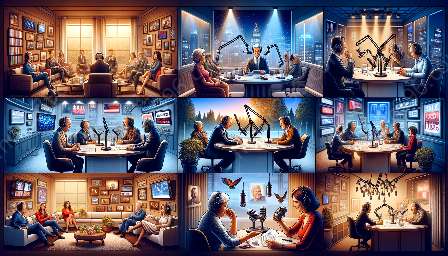Talk radio has long been a staple of the broadcasting industry, providing a platform for hosts to engage in discussions on a wide range of topics. From political commentary to lifestyle advice, talk radio formats offer a diverse array of content that caters to a broad audience. However, this segment of the radio industry also faces challenges and opportunities that shape its present and future.
Challenges in Talk Radio
One of the primary challenges that talk radio faces is the evolving media landscape. As technology continues to advance, traditional radio platforms must adapt in order to remain relevant and attract new listeners. Additionally, with the rise of streaming services and podcasts, talk radio has to compete with a growing array of alternatives for audience attention.
Advertiser retention is another challenge for talk radio. In an increasingly digital world, advertisers have more options than ever for reaching their target audience. This means that talk radio stations must work harder to demonstrate the value of their platform and the unique connection they have with their audience.
Opportunities in Talk Radio
Despite these challenges, talk radio also presents numerous opportunities for growth and innovation. One such opportunity lies in the digital space. Many talk radio shows now have an online presence, allowing them to reach a global audience and engage with listeners in new and interactive ways through social media, podcasts, and streaming platforms.
Furthermore, talk radio offers the opportunity to provide in-depth, long-form content that may not be readily available on other platforms. This allows hosts to delve into complex issues and provide in-depth analysis, catering to audiences seeking a deeper level of engagement and understanding.
Talk Radio Formats and Industry Relevance
When considering the challenges and opportunities in talk radio, it’s important to understand how it fits into the broader radio industry. Talk radio formats often complement music-based programming, offering a diversified content lineup that appeals to a wider range of listeners. Furthermore, talk radio continues to have relevance in an age of ever-changing media consumption habits, as it provides a more personal and interactive experience than many digital alternatives.
As the use of voice-controlled devices and smart speakers continues to rise, talk radio has the potential to carve out a unique space in this rapidly evolving technological landscape. Hosts and producers can explore opportunities for interactive, voice-activated content that aligns with the preferences of modern listeners.
Conclusion
The challenges and opportunities in talk radio are closely tied to the broader shifts in media consumption habits and technological advancements. By embracing digital platforms, exploring new content formats, and remaining responsive to audience preferences, talk radio can continue to evolve and thrive in the modern broadcasting landscape.









































